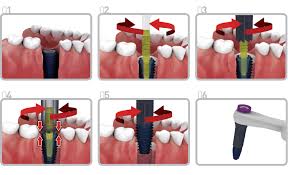If the implant fails or for the position to be changed of overall restorative strategy dental implants can be removed. Host rejection or infection can be where a dental implant failure can happen when lost.
The possible reasons for the failure are many, but there are two main categories:
Early Implant Failures
Within the first few months after the implant placement and early failure happens. We can remove the implant whether the failure is from too much movement happening during the healing process, infection, or because the implant didn’t integrate with the bone properly (called the osseointegration period), as it’s not fused to the jawbone.
Late Failures
A late failure can happen anytime after a year from the placement. It could have failed due to infection (like peri-implantitis), too much force, or the implant just becoming loose, these are also easy to remove.
Dental Implant Removal Procedure
If a dental implant does need to be removed, there are two situations where the removal procedure is necessary:
Removal Of A Non-Osseointegrated Implant
If necessary, we can remove an implant that has not integrated, with the bone within 48 hours of the placement. The situations that may require the removal of a non-osseointegrated implant include complications with the placement surgery, poor positioning, broken pieces of the implant, infection, or simply if the patient asks for it to be removed.
Removal Of An Osseointegrated Implant
If a dental implant has successfully integrated with the bone,we determine if the implant should come out. Reasons for removal can include, unsatisfactory osseointegration, infections like peri-implantitis, poor positioning of the implant, or if you ask to have it removed.
In both cases, the removal procedure would look similar to the placement surgery. You would probably go under anesthesia and we would use the tools to remove the crown (the part that looks like a tooth), take out the abutment (the part that the crown connects to), and finally remove the implant (the part that screws into the bone).
What next ?
Learn more about dental implants
Find out about the cost of dental implants


